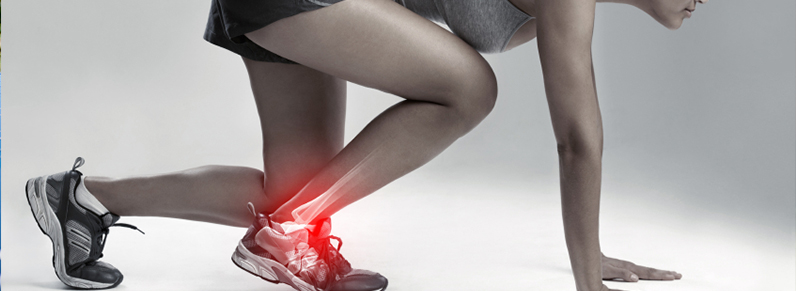Get 10% Off*, Use Code: RSHS25
Get 10% Off*, Use Code: RSHS25

Almost everyone enjoys athletics, but participating can lead to injuries. Whether playing tennis or battling on the gridiron playing football, our bodies can pay the penalty. Injuries are a part of sports and can interfere with our everyday lives. Bruises and pulled muscles are commonplace when we push our bodies in competition. Everything from sprains to tennis elbow and tendinitis (tendonitis) are all injuries that athletes must deal with.
If you have played a sport, there is a very good chance you have suffered a bruise. Maybe you were hit by a baseball, another player, or fell awkwardly. These simple activities could have left a bruise, that sore, purplish, ugly spot that says “ouch!!” Medically, a bruise is known as a contusion and is caused when tiny blood vessels in the skin are damaged or broken in the area that is impacted. A flat purple bruise that occurs when blood leaks into the top layer of the skin is called an ecchymosis. Usually a bruise will appear initially red, but over time as the skin heals it will change color (from a bluish-green to a yellow-brown). Normal healing time is 2 to 3 weeks. Sometimes the body “walls off” the blood caused by a bruise and forms a hematoma, and may need to be drained by your doctor. The best way to prevent or minimize a bruise is to use ice. Placing ice in a plastic bag and then wrapping it with a towel will apply cold to the area, minimizing blood flow and inflammation. Putting ice directly on the skin can lead to frostbite. Companies like Mabis manufacturer cold compresses that can be easily carried in first aid kits. They offer icing for up to 30 minutes on a one time use basis.

When we push our bodies during exercise or sport, we run the risk of pulling a muscle. Also known as a muscle strain, this occurs when we overstretch the muscle and small tears occur in the muscle. These strains are rated from a Grade I (mild discomfort and usually does not limit activity) to Grade I I I (significant pain accompanied by swelling and bruising). Rest is often the first step in rehabilitating muscle strains. Ice therapy is also recommended, but not for more than 15 minutes at a time. Depending upon the severity of the muscle strain, anti-inflammatory medications can help. Your doctor should be consulted before taking any anti-inflammatory medication. Possibly the best treatment is prevention. Since temperature has a direct affect on your muscles, application of a pain relieving gels such as Flexall 454 or Biofreeze could help loosen up with your muscle and prevent a strain. Stretching muscles to keep them loose before activity is also recommended. Also, the use of a compression bandage on a strained muscle can help. This is probably best for a Grade I strain only. Neoprene wraps also provide mild compression and retain body heat to keep muscles flexible.

Another common sports injury are sprains. Commonly we sprain our ankles, but they can happen in any ligament. Your ligaments are elastic bands that connect your bones and hold your joints in place. A sprain is a tear in those ligaments (partial or complete). These are also graded: First-degree Sprain (a pair of only a few fibers in the ligament), Second-degree Sprain (a partial tear of the ligament), Third-degree Sprain (a complete tear of the ligament). Usually accompanied by quick swelling, sprains can be extremely painful. Many medical professionals recommend R.I.C.E. (rest, ice, compression, elevation) as the best way to treat sprains. Your doctor may recommend resting the injured area for 48 hours. After that, ice therapy (similar to a bruise treatment) is suggested. This can be done three or four times a day, for 15-20 minutes at a time. The next step would be compression wraps made of elastic or neoprene to immobilize the area. Lastly the injured area should be elevated, above the heart level, to minmize swelling. The use of over-the-counter pain relievers (ibuprofen and acetaminophen) can help with pain relief.
Muscles are connected to our bones via tendons. When we overuse these muscles and tendons, they can become inflamed causing tendinitis/tendonitis. These injuries are more common in the upper and lower limbs. Depending upon the activity, tendinitis/tendonitis will usually form in an area that is constantly used. For instance, a basketball or volleyball player may develop patellar tendinitis due to the constant jumping and landing. In sports that require lunging, Achilles tendinitis may develop. These injuries are usually treated with NSAIDs and rest. Ice and compression are also important parts of treating tendinitis. Recovery from tendinitis can range from 2-3 days to full recovery in 4-6 weeks. Besides rest and ice, orthotics and braces may also be helpful during recovery.
Disclaimer: All content found on our website, including images, videos, infographics and text were created solely for informational purposes. Our content should never be used for the purpose of diagnosis or treatment of any medical conditions. Content shared on our websites is not meant to be used as a substitute for advice from a certified medical professional. Reliance on the information provided on our website as a basis for patient treatment is solely at your own risk. We urge all our customers to always consult a physician or a certified medical professional before trying or using a new medical product.